Disclosure: This article contains affiliate links. We may earn a commission from purchases at no extra cost to you, which helps our travel content.
Winter travel with children often feels like navigating a delicate balance between magical experiences and practical survival. Last December, I embarked on what I now fondly call our 'Tale of Two Winter Wonderlands' - a two-week journey with my kids from the snow-sculpted landscapes of Edmonton, Canada to the medieval Christmas charm of Rothenburg ob der Tauber, Germany. As a public defender constantly seeking educational opportunities disguised as adventures, I was drawn to how these contrasting winter celebrations reflect their communities' histories and values. Edmonton's festivals showcase innovation and resilience in extreme conditions, while Rothenburg's centuries-old traditions speak to cultural preservation and community bonds. What follows is our comparative exploration of these winter wonderlands - complete with ice castles, medieval markets, cultural insights, and yes, the occasional meltdown (both literal and figurative) that comes with family travel in below-freezing temperatures.
Edmonton: Where Winter Is an Art Form
Edmonton doesn't just endure winter; it celebrates it with a creativity that transforms the season into a canvas. The Ice on Whyte Festival became our first immersion into this frozen artistry, where international sculptors transform 2,000-pound blocks of crystal-clear ice into everything from dragons to replicas of famous bridges (my personal obsession). My kids were mesmerized by artists wielding chainsaws with surgical precision, creating ephemeral masterpieces that would eventually melt away – a beautiful lesson in impermanence.
The crown jewel of our Edmonton experience was undoubtedly the massive ice castle at Hawrelak Park. Unlike the precise sculptures at Ice on Whyte, these castles grow organically as thousands of icicles are placed by hand and sprayed with water to create an ever-evolving frozen fortress. Tunnels, slides, fountains, and thrones – all illuminated by color-changing LED lights embedded in the ice – created a landscape that felt plucked from Elsa's imagination in Frozen.
What struck me most was Edmonton's embrace of smart-city concepts even in their winter festivities. The Silver Skate Festival incorporated augmented reality elements that allowed my kids to scan QR codes throughout the site to unlock the history of Edmonton's relationship with winter. This blend of traditional winter activities with technological engagement reminded me of similar initiatives I'd seen on tribal lands in Arizona – using technology not to replace tradition but to preserve and share it.
Each night, we'd return to our cozy accommodation, grateful for the merino wool base layers I'd invested in for the whole family. These weren't just any thermal underwear – the natural wool regulated our body temperatures whether we were active outdoors or coming inside to warm up, preventing the sweaty-then-freezing cycle that can make winter activities miserable.
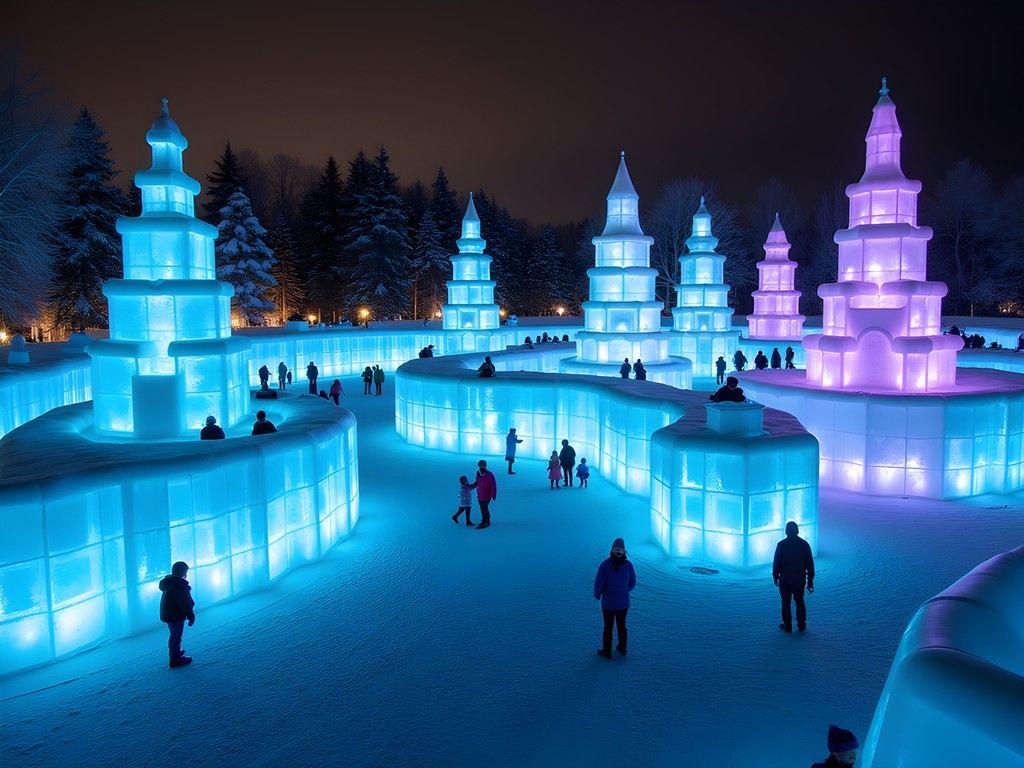
💡 Pro Tips
- Book ice castle tickets in advance for twilight hours when the lighting is magical but it's not yet too cold for children
- Bring a thermos of hot chocolate to Edmonton's festivals – vendors sell them, but lines can be long and prices high
- Pack hand and foot warmers for emergency warming during outdoor activities
Rothenburg: Stepping into a Living Christmas Card
Transitioning from Edmonton's contemporary winter festivals to Rothenburg ob der Tauber felt like traveling through time as well as space. This medieval walled town, miraculously preserved for centuries, transforms into what Germans call a Weihnachtstraum (Christmas dream) during December. Where Edmonton's winter identity is built on innovation and adaptation, Rothenburg's charm lies in its steadfast preservation of tradition.
The Reiterlesmarkt (Rothenburg Christmas Market) dates back to the 15th century, making it one of Germany's oldest markets. Unlike Edmonton's sprawling festival grounds, Rothenburg's market is intimately nestled within the town square, surrounded by half-timbered buildings that look exactly as they did hundreds of years ago. The market takes its name from the Rothenburger Reiterle, a folkloric figure who once was believed to carry souls of the dead but has evolved into a more benevolent character.
My legal background has trained me to notice how communities codify their values, and I was fascinated by how Rothenburg's Christmas market regulations preserve authenticity. Only handcrafted items and regional specialties can be sold, ensuring the market remains a showcase of local culture rather than mass-produced trinkets. My children developed an immediate addiction to schneeballen (snowballs) – spherical pastries made from strips of shortcrust dough, fried and covered in powdered sugar or chocolate. The recipe hasn't changed in over 300 years.
Each evening at dusk, we joined the Night Watchman's Tour – an experience I cannot recommend highly enough. Our guide, dressed in medieval garb complete with halberd and lantern, led us through narrow cobblestone streets while sharing tales of Rothenburg's history with humor that engaged even my history-resistant 9-year-old son. The tour provided crucial context for understanding how this town survived wars and modernization with its medieval character intact.
One practical investment that proved invaluable was our packable down jackets for each family member. Unlike Edmonton's consistent deep freeze, German winter temperatures fluctuate dramatically. These jackets compressed into small pouches in our daypack when the afternoon sun warmed the market, then deployed quickly when temperatures dropped after sunset.
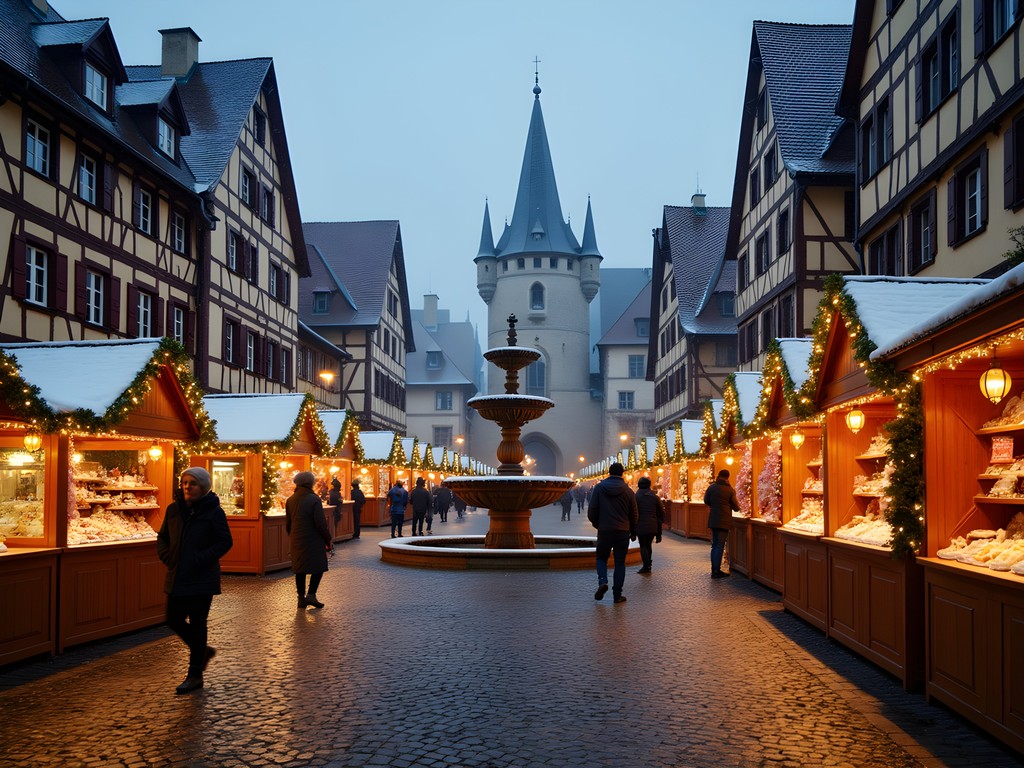
💡 Pro Tips
- Visit the Christmas Museum (Weihnachtsmuseum) for context on German Christmas traditions before exploring the markets
- Eat dinner early (5-6pm) before the restaurants fill with tourists from nearby cities arriving for evening market visits
- Walk the complete medieval wall circuit early morning for stunning views of the town without crowds
Cultural Immersion Through Winter Traditions
As a public defender, I've learned that understanding a community means participating in its traditions, not just observing them. In both destinations, we sought opportunities to engage actively rather than passively consume the experiences.
In Edmonton, this meant joining a community smudging ceremony at the Silver Skate Festival, where an Indigenous elder explained the significance of winter as a time of storytelling and knowledge transfer. My children sat transfixed as Cree winter stories were shared around a fire, drawing parallels between the Indigenous experience and their own Mexican-American heritage. Later, we participated in a workshop where local artisans taught traditional methods of creating ice lanterns – knowledge my daughter immediately declared we would bring back to our Philadelphia neighborhood.
Rothenburg offered different but equally meaningful immersion opportunities. We attended a workshop at the Christmas Museum where my children learned to make traditional straw stars for the Christmas tree. The instructor explained how these decorations originated during times when rural families had limited resources but abundant creativity – a lesson in sustainability that resonates across cultures. On December 6th, we experienced St. Nicholas Day, watching as the saint (accompanied by his companion Knecht Ruprecht) visited local children in the market square, rewarding good behavior with treats and gently admonishing misbehavior.
What fascinated me most was how both destinations used their winter traditions as vehicles for community building. Edmonton's festivals featured prominent volunteer components, with locals guiding visitors and sharing their city's story. Rothenburg's Christmas market similarly relied on community organizations, with proceeds from many stalls supporting local charities and schools.
Documenting these experiences became important, and I found myself reaching for my weatherproof notebook constantly. Between Edmonton's snow and Rothenburg's freezing rain, standard paper would have disintegrated, but this notebook allowed me to record observations, phrases in German, and my children's unfiltered reactions regardless of conditions.

💡 Pro Tips
- Research cultural events happening during your visit and prioritize those that allow participation, not just observation
- Learn a few phrases in the local language – even basic German opened doors to deeper conversations in Rothenburg
- Ask locals for their favorite winter traditions – we were invited to a home-based advent celebration through a conversation at a market stall
The Architecture of Winter: Ice vs. Medieval Stone
My fascination with bridges and architectural structures found unique expression in both destinations, though in dramatically different forms. Edmonton's winter identity is defined by temporary structures – massive installations that exist only for the season before melting away. The engineering behind the ice castle particularly captivated me; it's constructed using techniques similar to how igloos are built, creating structures that can withstand enormous pressure despite being made of frozen water.
I arranged for us to meet with one of the ice castle designers, who explained how they incorporate architectural principles from various cultures – including elements inspired by Moorish arches and Gothic cathedrals. My children were fascinated by the explanation of how running water freezes in different patterns depending on temperature and flow rate, creating varied textures throughout the structure. The designer showed us how they embedded LED lighting systems within the ice, explaining the technical challenges of waterproofing electronics in a structure designed to melt.
In stark contrast, Rothenburg's winter experience is defined by permanent medieval architecture that has witnessed centuries of Christmas celebrations. The town's preservation is so complete that walking its streets provides an authentic glimpse into how winter was experienced in the Middle Ages. The 13th-century town walls and gates are particularly impressive in winter, when snow outlines their architectural details and fewer tourists allow for contemplative exploration.
We spent one morning with a local architectural historian who pointed out how the town's buildings were designed to manage winter conditions – the steep roofs to shed snow, the strategic positioning of buildings to create wind breaks in market squares, and the narrow streets that provided some shelter from winter storms. These architectural adaptations to winter weren't temporary spectacles but essential survival strategies embedded in the town's design.
Capturing these architectural details required a camera that could handle challenging lighting conditions. My mirrorless camera proved perfect for this purpose, handling both the extreme low light inside Rothenburg's medieval buildings and the high-contrast situations of sunlight on snow in Edmonton. The weather-sealed body also meant I didn't worry about snowfall or condensation when moving between temperature extremes.
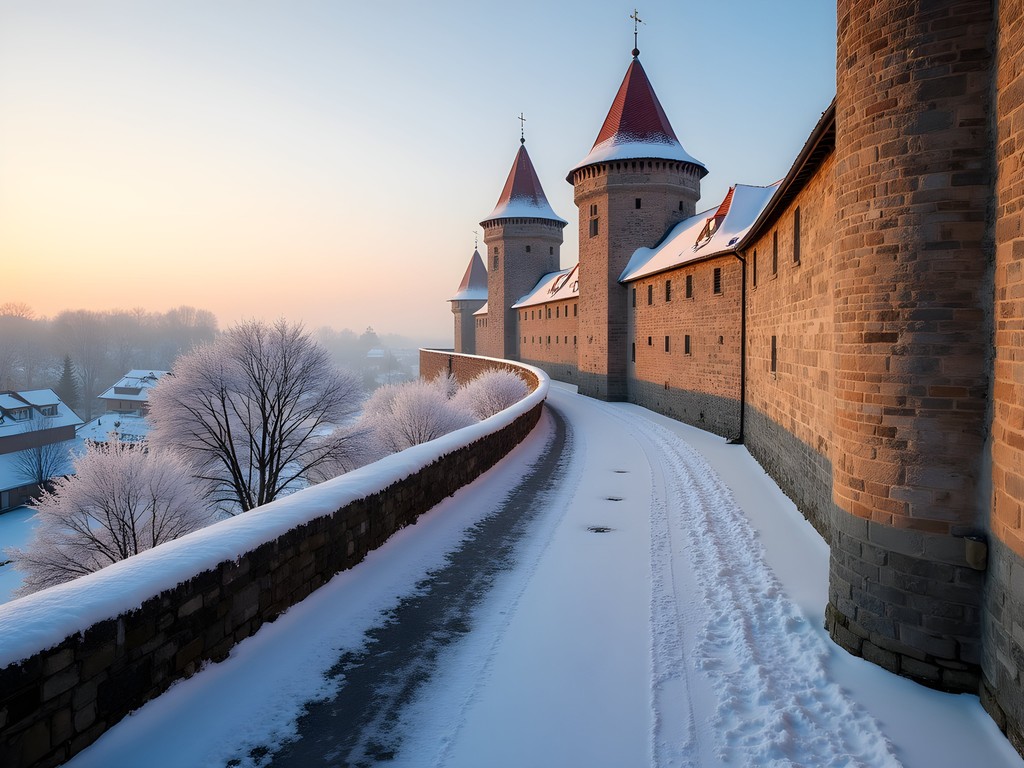
💡 Pro Tips
- In Edmonton, visit the ice castle construction site early in the season when you can sometimes observe the building process
- Rothenburg's medieval walls are less crowded at sunrise and offer perfect photography opportunities with morning light on the snow-covered town
- Bring binoculars to appreciate the architectural details of Rothenburg's buildings that aren't visible from street level
Family Challenges: Managing the Winter Adventure Reality
Let me be transparent: winter travel with children is not for the faint of heart. The magical moments I've described were punctuated by challenges that tested our resilience as a family. In Edmonton, the extreme cold (-22°F on our coldest day) meant carefully timing our outdoor activities and having contingency plans for when little fingers and toes inevitably became too cold despite proper gear. My son had a complete meltdown on day three when his favorite hat was temporarily lost, and the combination of cold and frustration overwhelmed his coping skills.
Rothenburg presented different challenges. The cobblestone streets, charming in photos, became treacherous when covered with ice, leading to a minor sprained ankle for me after a slip outside St. Jakob's Church. The limited daylight hours (darkness by 4:30 pm) compressed our sightseeing window and disrupted the kids' energy patterns. And while German Christmas markets are famous for their glühwein (mulled wine), finding appropriate warm beverages for children sometimes proved challenging in the less touristy market stalls.
These challenges, however, became opportunities for teaching resilience and problem-solving. When my daughter complained about the cold in Edmonton, we discussed the engineering behind the clothing layers keeping us warm and how people have adapted to extreme environments throughout history. When navigating Rothenburg's icy streets became difficult, we researched medieval winter transportation and discussed how community design affects mobility in different seasons.
One tool that proved invaluable was our travel first aid kit, which I'd enhanced with additional cold-weather essentials like extra hand warmers, moisturizing lotion for dry skin, and electrolyte packets to maintain hydration in dry winter air. The kit's compact design meant it fit easily in my daypack, providing peace of mind throughout our journey.
I also established a daily rhythm that balanced outdoor adventures with indoor recovery time. In both destinations, we adopted a pattern of morning exploration, midday warming break with hot lunch and rest, followed by afternoon/evening activities. This rhythm prevented the exhaustion that can turn winter magic into winter misery for young travelers.

💡 Pro Tips
- Schedule a 'warming break' every 60-90 minutes during very cold Edmonton activities – hot chocolate in a cafe works wonders for restoring morale
- Pack moisturizer and lip balm – the combination of cold outdoor air and heated indoor spaces creates extremely dry conditions that affect comfort
- Create a simple signal system with children for communicating when they're too cold before they reach meltdown stage
Final Thoughts
As our journey between these two winter wonderlands concluded, I found myself reflecting on how differently these communities embrace their coldest season. Edmonton transforms winter into an artistic medium and celebration of human ingenuity, while Rothenburg wraps winter in layers of tradition and historical continuity. Both approaches offer profound lessons about resilience and community that I wanted my children to absorb.
While these destinations differ dramatically in their winter expressions, both revealed that the true magic of winter travel lies not just in the spectacle but in how communities come together to find joy in the coldest, darkest season. Whether through the ephemeral ice architecture of Edmonton or the centuries-old market traditions of Rothenburg, winter celebrations represent triumph over adversity – a lesson worth traveling halfway around the world to learn.
As you plan your own winter adventure, I encourage you to look beyond the postcard images to the community stories beneath the surface. Engage with local traditions, ask questions about how winter shapes daily life, and be prepared for both challenges and unexpected moments of wonder. Winter travel requires more preparation but rewards you with experiences impossible in any other season.
✨ Key Takeaways
- Winter destinations offer unique cultural insights through seasonal traditions that reveal community values
- Proper preparation and flexible scheduling are essential for successful winter travel with children
- Alternating between outdoor adventures and indoor warming activities creates sustainable winter travel rhythm
- Both modern winter festivals and traditional Christmas markets provide educational opportunities about community resilience and adaptation
📋 Practical Information
Best Time to Visit
Early December for Rothenburg markets; January for Edmonton festivals
Budget Estimate
$3,500-5,000 for a family of three for two weeks including flights
Recommended Duration
5-6 days in each destination with travel days between
Difficulty Level
Moderate - Cold Weather And International Travel Require Extra Planning With Children


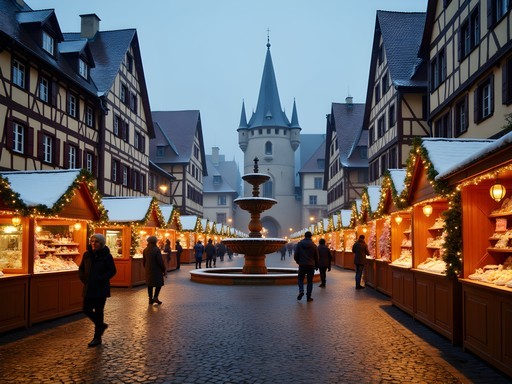
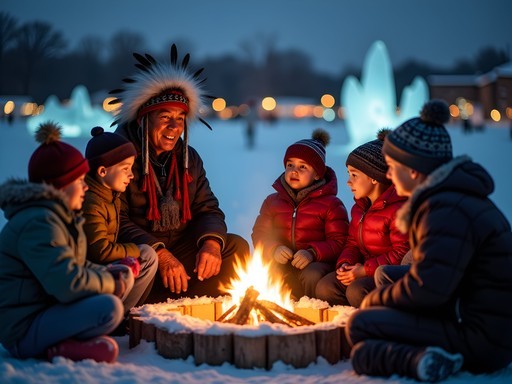
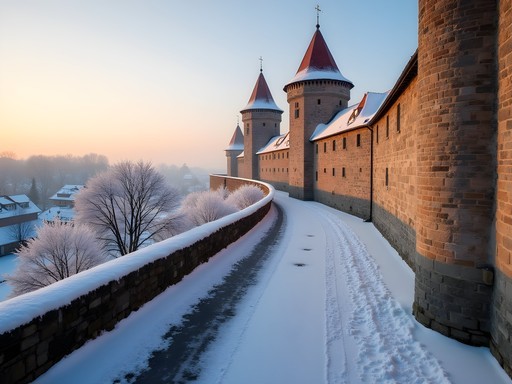
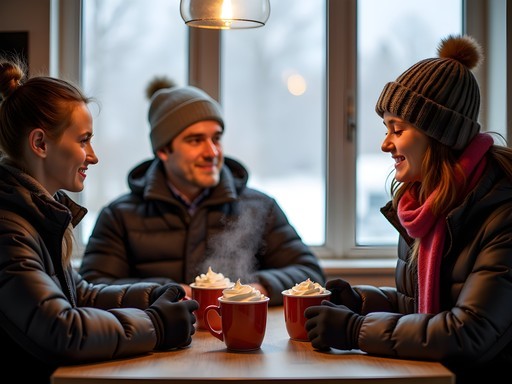










Comments
Sarah Powell
What a fascinating comparison! I visited Edmonton's Ice on Whyte Festival last January and was blown away by the artistry. The contrast between the modern city backdrop and these ephemeral ice sculptures creates such a unique atmosphere. One thing I'd add about Rothenburg that wasn't mentioned - the Night Watchman's Tour is absolutely worth doing, even in winter. The guide stays in character while walking you through the town's medieval history, and seeing those snow-dusted towers by lantern light is unforgettable. Savannah, did you find the pricing comparable between these destinations? I found Edmonton surprisingly affordable for winter activities compared to European Christmas markets.
Savannah Torres
Great point about the Night Watchman's Tour, Sarah! We did it and the kids were enthralled. On pricing, you're absolutely right - Edmonton was much more affordable overall, especially accommodation. The festival entry fees were reasonable too. Germany's Christmas markets are free to enter but we definitely spent more on food, gifts, and lodging there.
skyone
Beautiful pics! Which one would you recommend for a first-timer?
Savannah Torres
Depends on what you're after! Rothenburg for old-world charm and milder temps, Edmonton if you want to embrace full-on winter wonderland (and don't mind serious cold).
starmood
I've done both! Edmonton's Ice Castle was magical but I nearly froze taking photos. For Rothenburg, I recommend staying overnight - the town empties of day tourists after 5pm and that's when it really feels special. We stayed at a little guesthouse right in the old town and could wander the empty streets after dinner. Completely different experiences but both worth it for winter lovers. I used my hand warmers constantly in Edmonton though!
mountainmood
That's such good advice about staying overnight in Rothenburg! Adding that to my notes. Did you try the snowball cookies they're famous for?
starmood
Yes! Schneeballen! They look better than they taste honestly, but still a must-try. The glühwein is the real star!
mountainmood
OMG your photos of Rothenburg are straight out of a fairytale!! 😍 I've been dreaming about visiting the Christmas markets in Germany forever! Did you find it super crowded? Worth the hype?
tripnomad3608
Great comparison! How did you handle the extreme cold in Edmonton with kids? I'm planning a trip there this winter and worried about keeping my little ones warm enough to enjoy those ice festivals.
Savannah Torres
Layers, layers, layers! We invested in good quality merino wool base layers for everyone and took frequent warming breaks. Most of the festivals have heated tents where you can grab hot chocolate and warm up. The kids actually handled it better than I expected!
tripnomad3608
Thanks so much! I'll definitely look into those wool layers. Did you find Edmonton's indoor attractions good enough to balance out the outdoor cold time?
Savannah Torres
Absolutely! West Edmonton Mall alone could keep you busy for days if you need indoor time. The Royal Alberta Museum was also a hit with my kids.
AdventureFamily5
Just booked our Edmonton trip for January after reading this! Can't wait!
Casey Andersson
Savannah, your comparison of these two winter destinations is absolutely spot-on! I've experienced both and they truly represent different sides of winter magic. For anyone heading to Edmonton with little ones, I'd suggest investing in proper snow gear - my heated gloves were absolute lifesavers in those -30°C days! The Ice Castle you mentioned was breathtaking at sunset when they turn on the embedded lights. One thing I'd add about Rothenburg is to try the schneeballen cookies - they look like snowballs and come in dozens of flavors. My kids were absolutely enchanted by the Night Watchman's Tour too - spooky but not too scary for the little ones. Did you get a chance to do that, Savannah?
sunsetking
Those schneeballen cookies are so Instagram-worthy but I found them a bit dry! Am I the only one? The cinnamon ones were decent though.
Casey Andersson
Haha, you're not alone! They're definitely more for show than taste. The chocolate-dipped ones are a bit better. But nothing beats the glühwein to warm up!
vacationrider
Just booked our trip to Rothenburg for Christmas after reading this! Anyone know if it's better to stay inside the old town walls or outside? Traveling with grandparents who can't walk too far.
Hunter Thompson
Definitely inside the walls if you can swing it! Everything's close by and the atmosphere is unreal when the day-trippers leave. Bit pricier but worth every penny for the grandparents!
Sage Dixon
Agree with Hunter - inside the walls is magical at night. Hotel Eisenhut is centrally located and has elevator access if mobility is a concern.
TravelWithToddlers
Going to Rothenburg this December with my 4-year-old! Any specific kid-friendly activities you'd recommend there?
Savannah Torres
Your 4-year-old will love it! Don't miss the Christmas Museum (Weihnachtsmuseum) - it's filled with historic Christmas decorations and toys. Also, the Käthe Wohlfahrt Christmas store has a magical animated display that had my kids mesmerized. For a break from the cold, the Medieval Crime Museum has some interactive elements that even young kids enjoy (though maybe skip some of the more graphic sections).
GermanTraveler22
Adding to Savannah's great suggestions - there's also a puppet show at the Christmas Market on weekend afternoons that's perfect for little ones!
adventureking
Those ice sculptures look incredible! Edmonton just made my winter bucket list.
Venture X
Premium card with 2X miles, $300 travel credit, Priority Pass